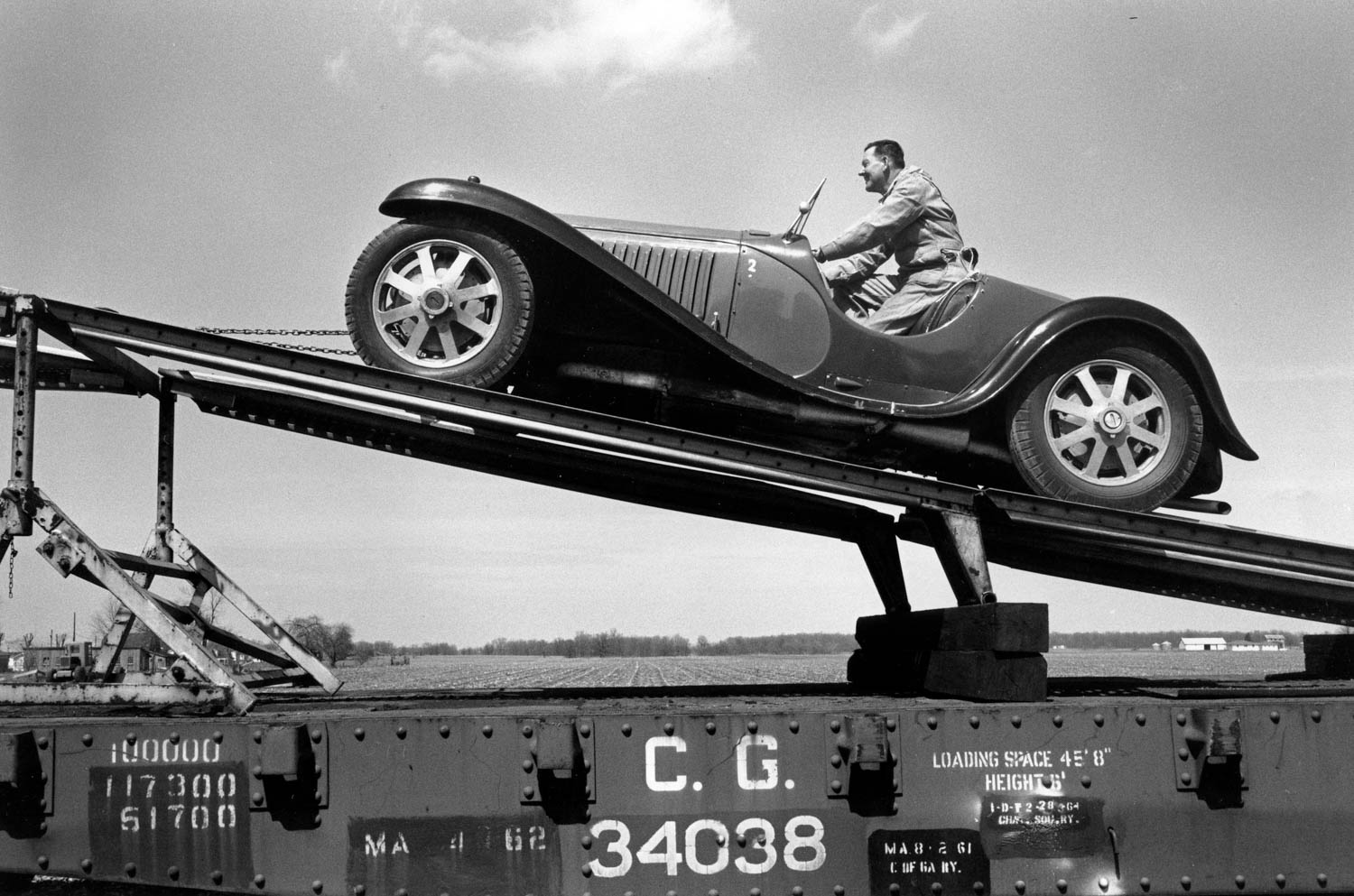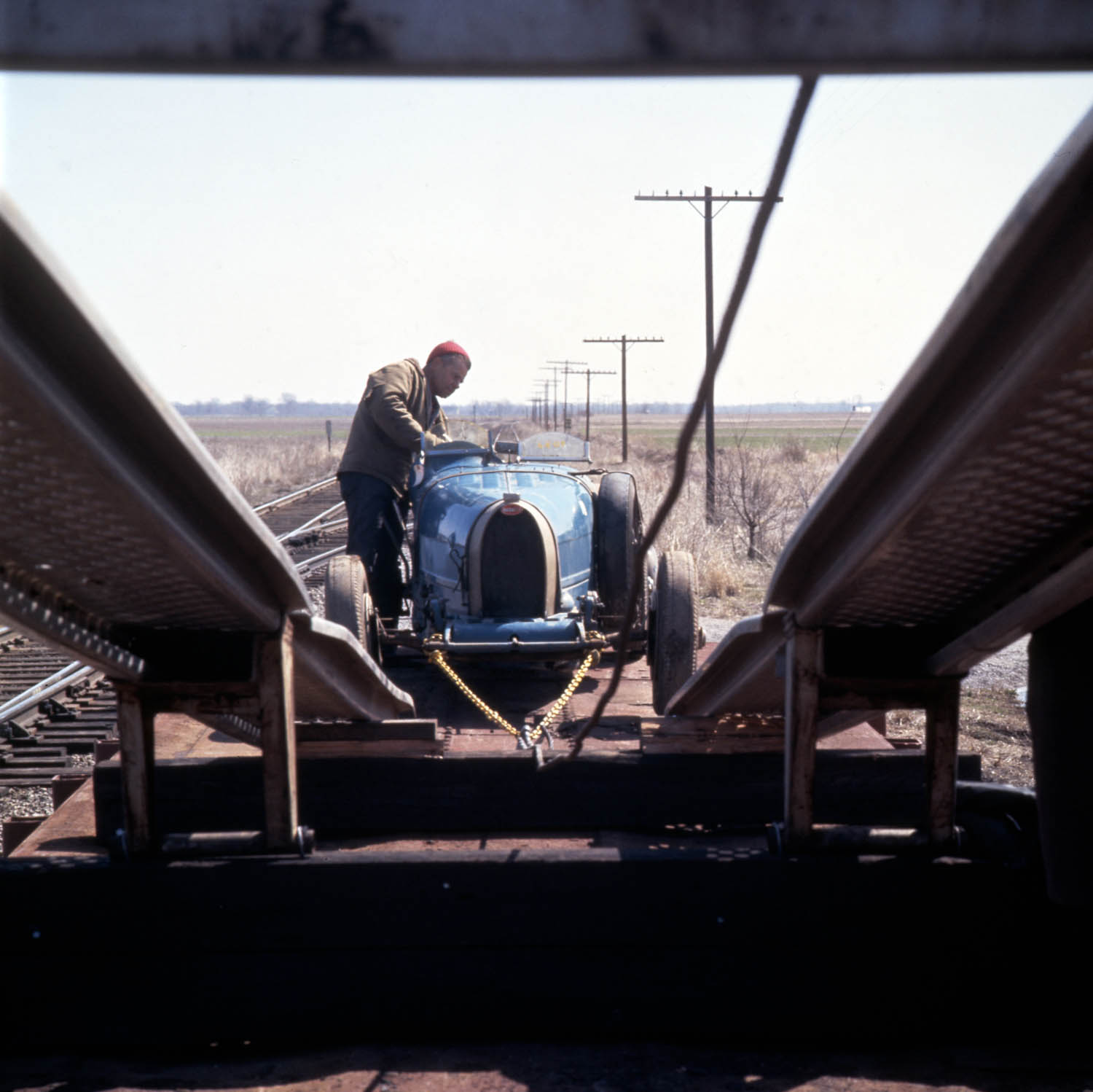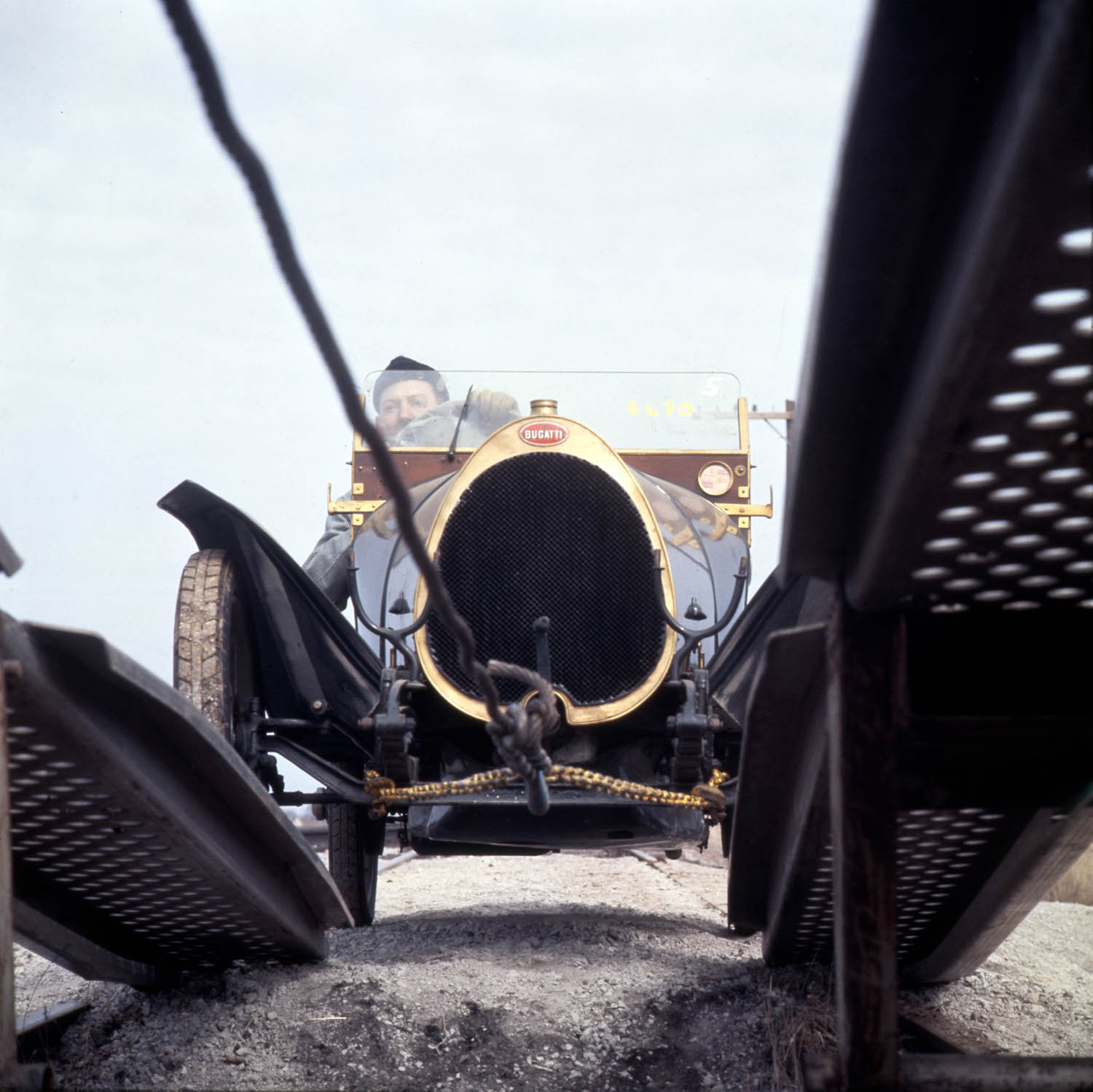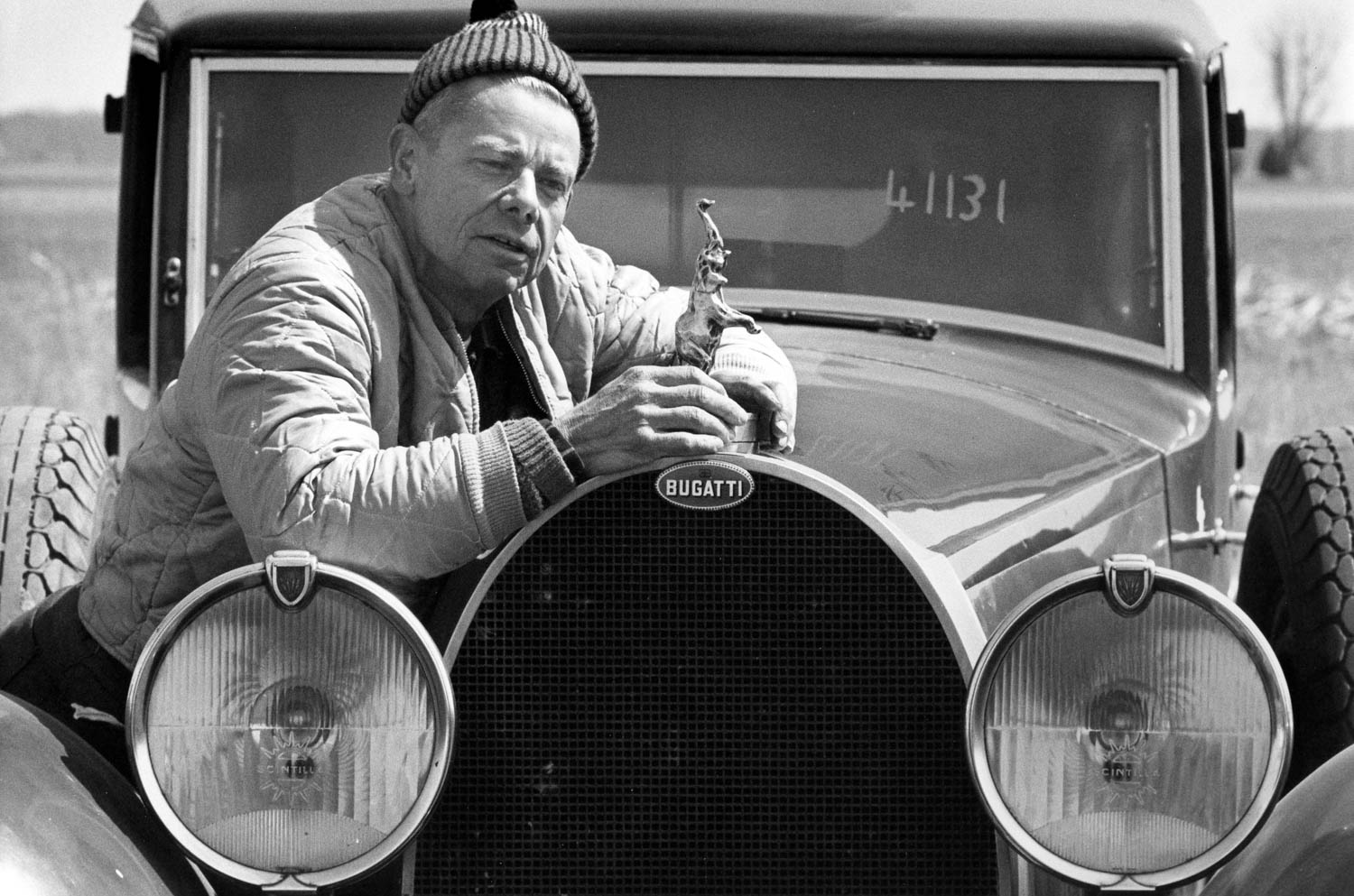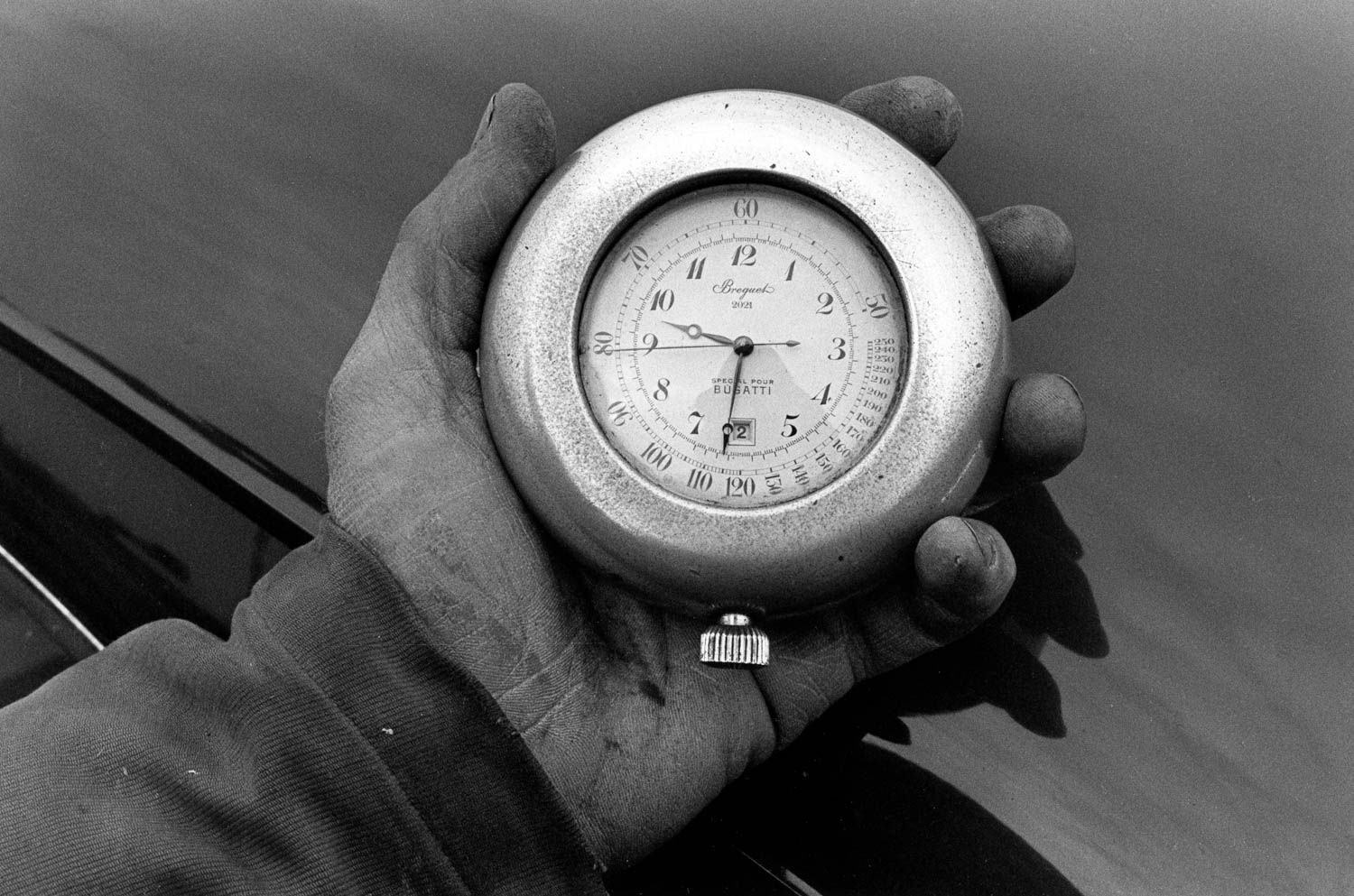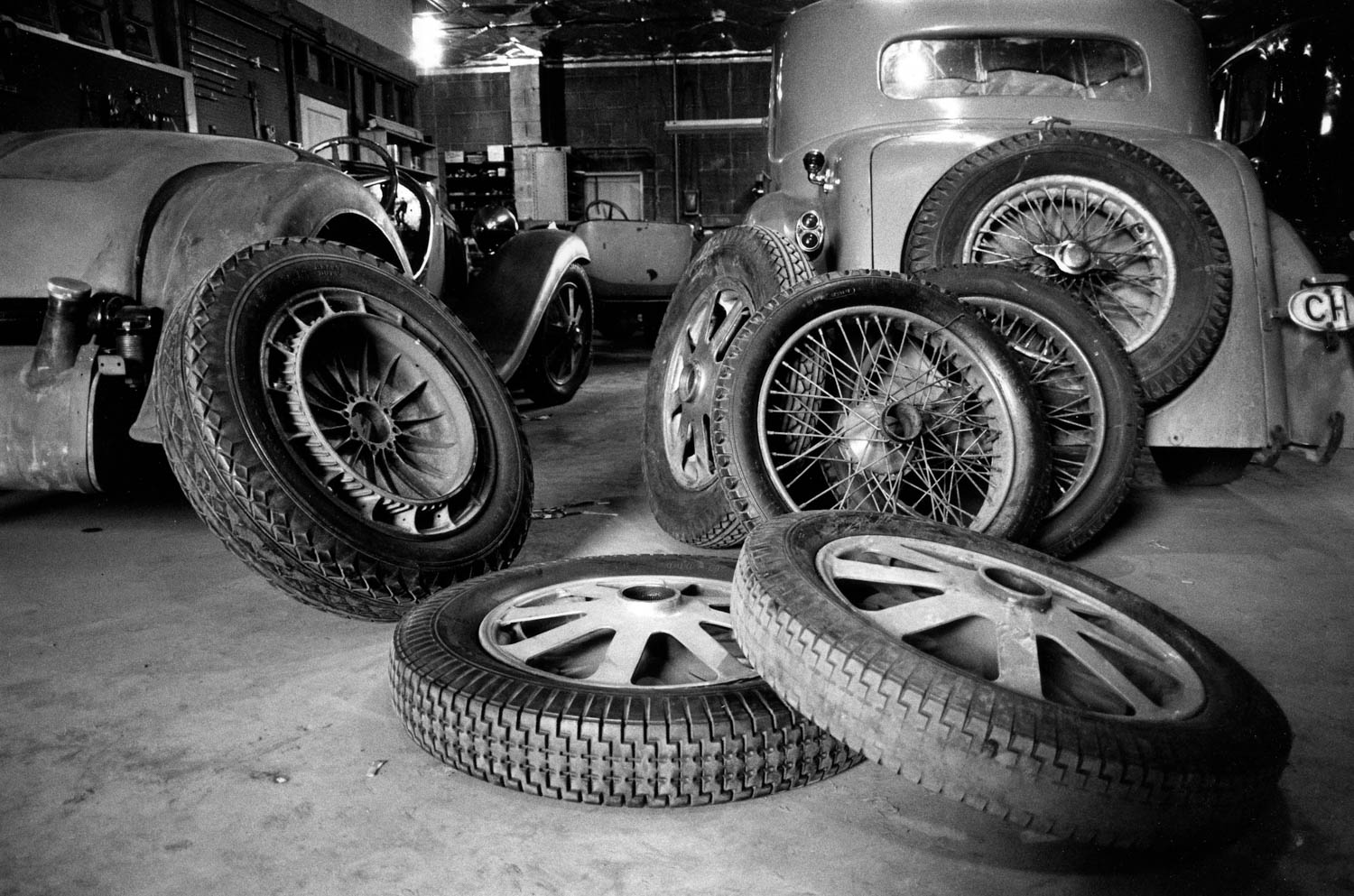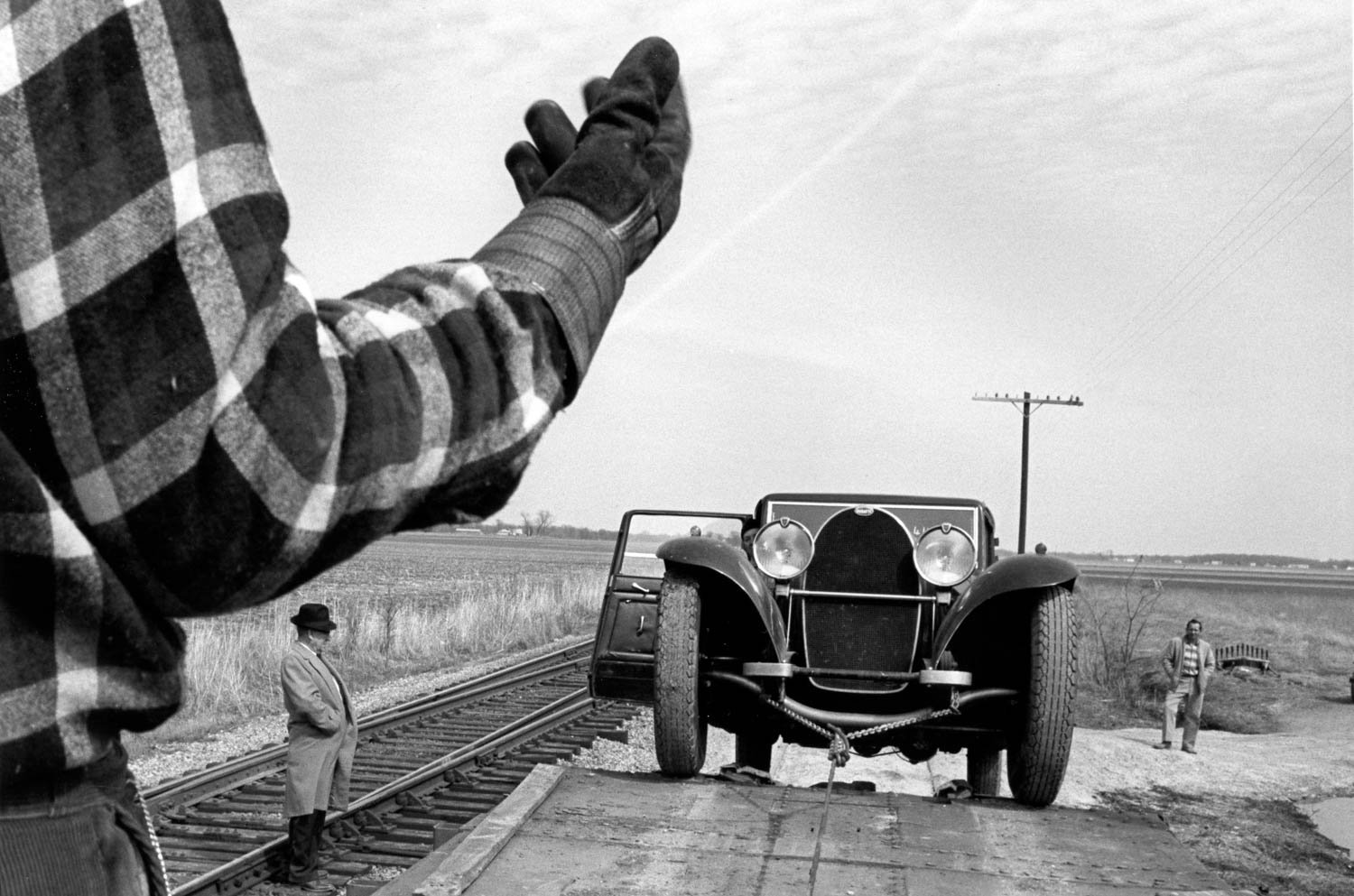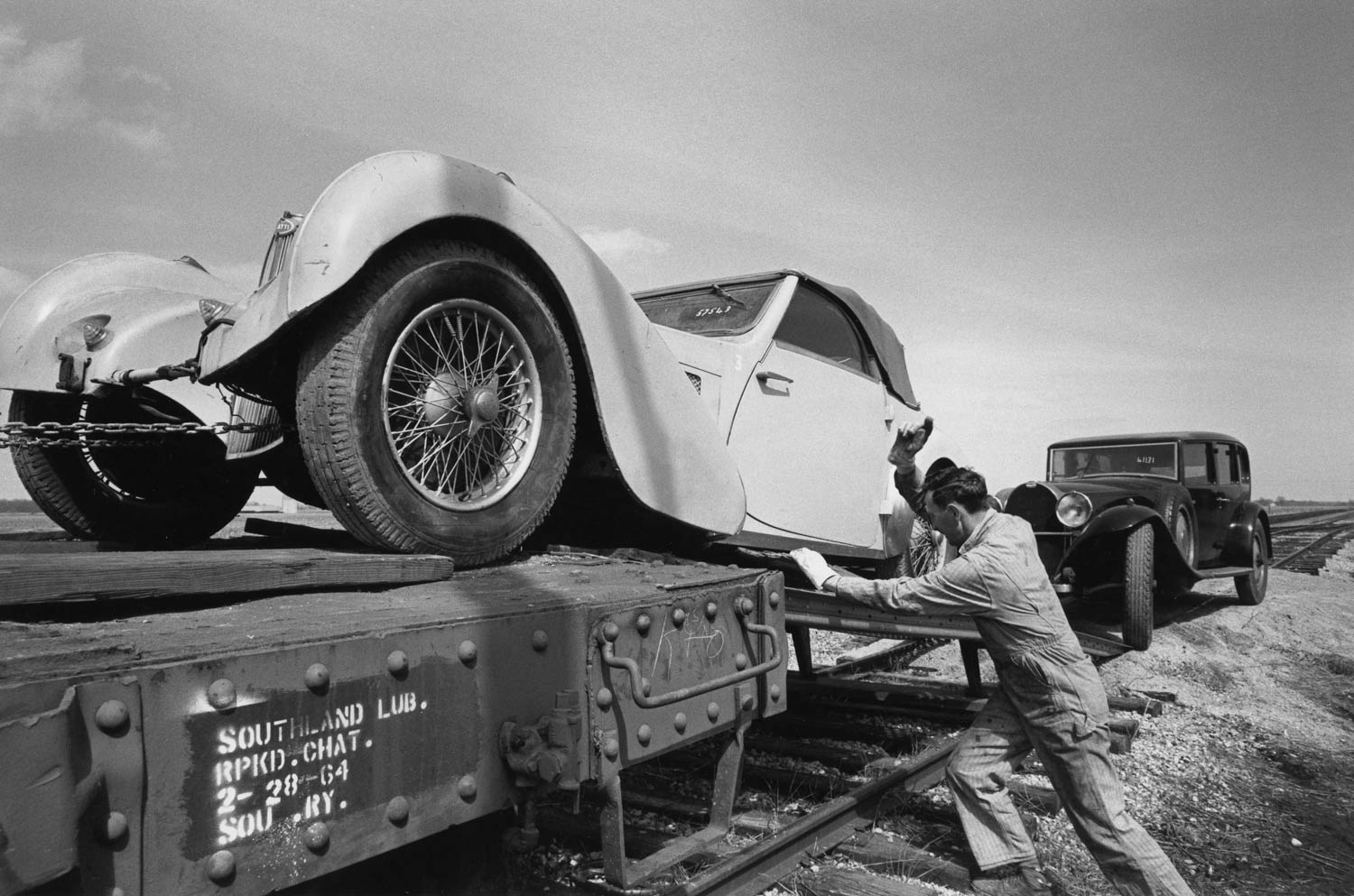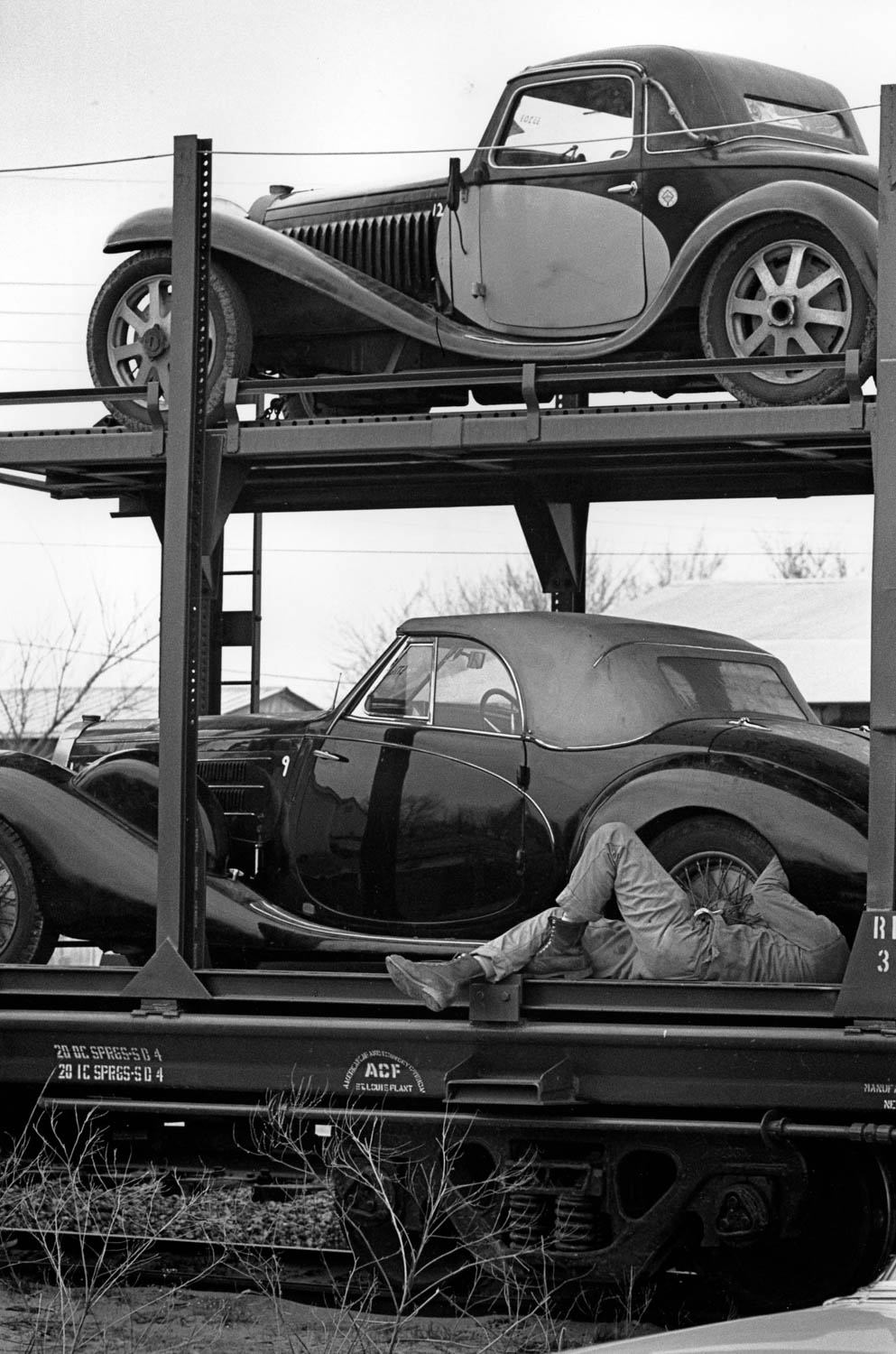The used-car deal of the century included 30 Bugattis
Bugatti sage Hugh Conway lit the fuse on the grandest bombshell ever to rock the car world by compiling a comprehensive Bugatti owner registry in 1962. That was exactly the impetus fellow aficionado Fritz Schlumpf needed to begin scooping up every last Bug that money could buy for his collection in Mulhouse, France.
Sixty miles to the north in Molsheim, the Bugatti factory had been still for a decade following the death of patron Ettore Bugatti at age 65 in 1947. From the brand’s 1909 founding, 8000 or so cars were manufactured for road and racing use. Bugatti’s competition success included wins at the first-ever Monaco GP in 1929, the 24 Hours of LeMans in 1937 and 1939, and five Targa Florio victories in a row beginning in 1925.
Distinctive design and advanced engineering made Bugattis platinum-grade investments for serious car collectors. The Italian-born, Swiss-nationalized Schlumpf was obsessive in his pursuit of these gems. Business tactics he learned first as a coal broker, then a wool monger served him well throughout his career and those negotiating skills came in handy for amassing a private collection of over 500 cars and countless art objects.
Schlumpf’s foil, John Shakespeare of Centralia, Illinois, was the wealthy heir to the eponymous fishing gear enterprise created by his father. After completing studies at Harvard, John settled in the small Illinois town to oversee oil business and car dealership interests. His sports car enthusiasm began with a Porsche 356 and quickly escalated to Ferraris. In 1954, Shakespeare co-drove a Ferrari 375MM with Luigi Chinetti to a sixth-place finish in the Carrera Panamericana Road Race.

Two years later, he bought a 1932 Bugatti Type 55 supercharged roadster. Impressed by that car’s craftsmanship, Shakespeare then went all in with what a St. Louis newspaper headline proclaimed as ‘the biggest, costliest, rarest car in the world.” For either $8000 or $10,000 (reports vary), he became the third owner of the 1933 Type 41 Royale resplendent in Park Ward coachwork. After driving it 250 mile home from Chicago, Shakespeare noted, “My Royale stirred lots of attention but the 5000-pound curb weight proved tiresome to slow with a mechanical brake system.”
Unaware of their similar activities, Shakespeare and Schlumpf waged Bugatti collecting campaigns on opposite sides of the globe. By 1962, when each owned about 30 Bugs, Shakespeare’s passion was flagging. He mentioned to a colleague that he had too many hobbies, his interest was shifting towards participatory sports such as water-skiing and sky-diving, and that he might be willing to liquidate his car collection for what he had invested–$105,000.
That scuttlebutt quickly reached Conway, the Bugatti Pope who promptly relayed the intelligence to Schlumpf. His immediate response was a burning desire to make a deal. By way of Conway, Schlumpf demanded photographs and a spare parts list, insisting that “the cars must be in perfect working order.” On the condition that the Shakespeare Bugattis were impeccable, he offered $70,000 for the lot.
Fretting over what he termed ‘bandits’ in the used-car arena, Schlumpf asked Conway to represent his interests with an inspection tour to America. Conway delegated the task to Bugatti Club member in good standing Bob Shaw, a successful steering wheel manufacturer who resided near Shakespeare’s home in northern Illinois.
One month later, Shakespeare dispatched his response to Schlumpf’s offer: Shaw was welcome to examine his cars, though five were apart for restoration. He added that Reno, Nevada, casino owner and car collector Bill Harrah was very interested in the Royale and a few other cars. His preference, however, was finding a suitable home for the whole collection even if that meant taking a loss on his investment.
Following his visit, Shaw forwarded a disappointing report to France. Most of the Bugattis were stored in a dirt-floor building with a leaky roof and broken windows. Only a few cars were housed in the compound’s heated, concrete-floored shop.

Practically every one of Shakespeare’s Bugattis were in some state of disassembly awaiting the attention of their owner, distracted by other interests, or his mechanic. No engine had run in 18 months. Four including the Royale were presentable, but the rest of the collection was questionable. What was supposed to be a Type 50 LeMans replica consisted mainly of Buick parts. Concluding that restoring all the cars would be a monumental task, Shaw counseled against the purchase.
If he was disappointed by the bad report, Schlumpf never acknowledged that. Instead he raised his offer to $85,000 as long as the Royale was roadworthy and suggested that the Shakespeare collection might be displayed in a group setting with attribution to the previous owner.
The next hitch was the discovery that the Royale’s cylinder block was cracked, probably due to inadequate preparation for winter storage. Bored with the whole transaction, Shakespeare threatened to cancel the deal before he travelled to Florida.
Upon his return, Shakespeare’s mood was brighter. The deal resumed with admission that a few of the cars would have to be assembled in Florida. When the seller ignored Schlumpf’s request for a shipping date, the buyer threatened to hand negotiations over to his attorney. The eight-page letter that ensued stated, “You see that I wrote you nicely and prettily without animosity. But you must not confound my prettiness with weakness.” Then he threatened to lodge formal complaints through ten institutions ranging from “the American tribunal and court of justice to all Bugatti clubs and [magazine] reviews around the world.” If the cars weren’t shipped within four months, damages of $500 per day would be levied.

Two months later, Schlumpf received a letter from Shakespeare’s attorney calling the Frenchman’s threats blackmail. Amazingly, negotiations resumed late in 1963 without rancor. While Shakespeare noted that no shipping space was available until the following spring, two of the Florida cars had been transported to Illinois for reassembly. After 14 months of cantankerous dialogue, the seller offered to ship his Bugatti booty upon receipt of payment.
Several weeks later, the Southern Railway spotted three rail cars on a siding adjacent to Shakespeare’s shop and loading commenced bright and early on a Monday morning. Photographer David Gulick of the St. Louis Post Dispatch’s Sunday Pictures magazine documented the movement of Shakespeare’s Type 35A Bugatti at the end of a chain pulled by a Jeep. He coaxed a smile out of Shakespeare while he removed the Royale’s elephant mascot and Breguet chronometer for packing.
Following their train ride to New Orleans, the 30 Bugattis were transferred to an ocean freighter destined for Le Havre, France. Upon arrival in Mulhouse, Schlumpf was armed with a whip to shoo away the curious. In addition to the American horde, fourteen other Bugattis had recently arrived from Hispano-Suiza, the firm in possession of the original factory’s remains.
During the ensuing decade, Fritz and Hans Schlumpf lost faith in their woolen business as Asian competition intensified. Instead, they concentrated on converting one of their mills into a combination museum and shrine to their late mother. Forty craftsmen toiled prepping cars for display and the grandest hotel in town was purchased to host expected visitors.

But before the facility’s scheduled opening in 1976, the Schlumpfs were forced into exile by a workers’ revolt over exploitative labor practices. When the mills fell into receivership, disgruntled employees charged the ramparts to see what was going on inside the museum. To their utter astonishment, they found 427 pristine automobiles resting placidly atop white gravel over three football fields of display space. Some 800 roof pillars were adorned with candelabra copied from Parisian Pont Alexandre III lamps. There were 122 Bugattis in situ plus another 150 cars stashed in reserve. Three gourmet restaurants were poised to serve 1200 patrons their preference of Italian, French, or Swiss cuisine. Near the main entrance, a tableau commemorated the life of Jeanne Schlumpf—1878-1957—to whom the collection was dedicated.
The French government tried the Schlumphs in absentia, finding them guilty of tax evasion, false accounting, abuse of assets, and gross mismanagement. The museum was seized in exchange for debts and declared a national monument. Finally opening to the public in 1982 as the National Automobile Museum, the words ‘Schlumpf Collection’ were added following the founders’ protest. The current price of admission is 14 euros (just under $16) with discounts for children, families, and seniors. The world’s largest car museum includes one custom-bodied Bugatti Type 38 two-seat roadster magnanimously donated by Bob Shaw.
Both brothers were fined $10,000 and sentenced to prison though neither served a day behind bars. Hans Schlumpf died in 1989 and his brother Fritz was granted only a one-day visit to the collection prior to his 1992 passing.
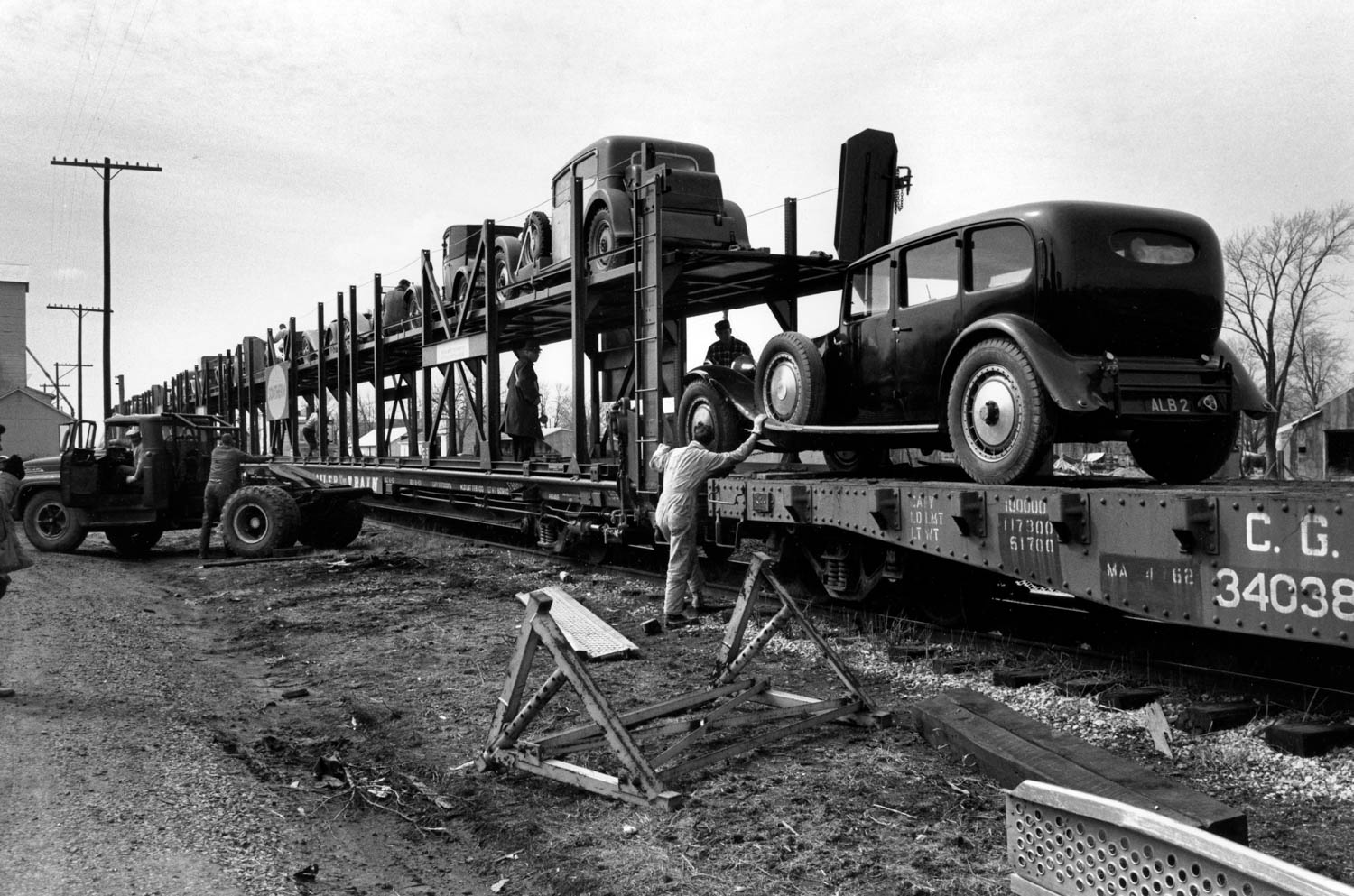
Shakespeare, the 1975 victim of a home invasion, was discovered bound, gagged, and shot in his basement. Police interviewed suspects in ten states and three foreign countries but never made an arrest or solved the crime.
One interesting postscript is that six Shakespeare Bugattis returned to America in 2008 after Peter Mullin purchased 62 cars from the Schlumpf Reserve collection. Two years later, they went on display at the Mullin Automotive Museum in Oxnard, California, (formerly the Otis Chandler museum), in unrestored condition along with the 1925 Type 22 Brescia that spent 75 years at the bottom of Lake Maggiore in Switzerland. (Mullin paid a reported $370,000 at auction for the wet heirloom to display it in as-recovered condition at his homage to art deco and the machine age.)
Translating Bugatti values to today’s dollars yields astonishing results. After Volkswagen bought the Bugatti remains in 1998, the Group spent either $7 or $20-million (reports vary) to own the first of only three Royales ever delivered to a customer, the Coupe de ville Binder. The $85,000 spent by Schlumpf in 1964 for the Shakespeare collection inflates to $697,000 today. But according to Hagerty valuation experts, the 30-car lot would be worth nearly $95 million and the Royale alone could bring $30 million at auction. The Type 35A, Type 46, Type 50, Type 55, and Type 57 models would all range between one and ten million dollars apiece.
